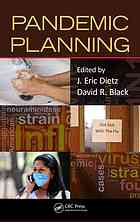

Most ebook files are in PDF format, so you can easily read them using various software such as Foxit Reader or directly on the Google Chrome browser.
Some ebook files are released by publishers in other formats such as .awz, .mobi, .epub, .fb2, etc. You may need to install specific software to read these formats on mobile/PC, such as Calibre.
Please read the tutorial at this link: https://ebookbell.com/faq
We offer FREE conversion to the popular formats you request; however, this may take some time. Therefore, right after payment, please email us, and we will try to provide the service as quickly as possible.
For some exceptional file formats or broken links (if any), please refrain from opening any disputes. Instead, email us first, and we will try to assist within a maximum of 6 hours.
EbookBell Team

5.0
88 reviews''Foreword The impact of an influenza pandemic can be measured in a variety of ways 50 million deaths in 1918 and 1919; hundreds of millions of individual cases of sickness in 1957; and an estimated three to four trillion dollars lost in global productivity in 2009. By their very nature, the characteristics and outcomes of future pandemics are extremely difficult to predict. This uncertainty, however, should not be viewed as a reason to avoid planning, but rather as a motivator to emphasize the necessity of thorough, complete, and flexible plans for the inevitable pandemics of the future. By improving the readiness of your organization to operate during a pandemic, the likelihood is increased that you will be able to respond quickly and appropriately to future events. Preparedness requires cooperation and collaboration on multiple levels. Individuals should protect themselves and their families; employers should enact policy changes to avoid the spread of illness in the workplace and in schools; healthcare providers and governmental bodies should exercise to test themselves and their communities. True preparedness requires multilevel commitments across geographic and organizational borders. Pandemics result in urgent needs and demands and resources will be limited. To be effective during the real event, this requires us to train and exercise the necessary skills and create plans before the crisis. It is imperative to develop and implement clear metrics for both individual and organizational performance. The ultimate purpose of planning and preparing for a pandemic is twofold: (a) to decrease the morbidity and mortality rates of the illness, and (b) to improve recovery time so that economic and social activities can be resumed at their normal levels''--Provided by publisher.